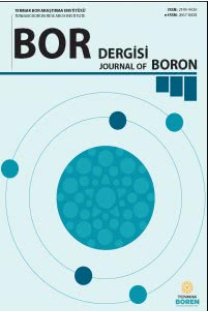Boronik asit moleküllerinin Pseudomonas aeruginosa’da virülens faktörlerinin üretimine etkisi
Hücreler arası iletişim sistemi (quorum sensing system (QS)), bakterilerin birbirleriyle oto-indükleyici olarak adlandırılan, küçük difüze olabilen moleküller kullanarak iletişim kurduğu bir sistemdir. Bu sistemin bakterilerde, virülans faktörlerinin üretimi de dahil olmak üzere pek çok fonksiyonu kontrol ettiği, yapılan çalışmalarla gösterilmiştir. Bu çalışmanın amacı, Pseudomonas aeruginosa’da üretimi hücreler arası iletişim sistemi ile kontrol edilen virülens faktörleri üretimine boronik asit moleküllerinin potansiyel inhibitör etkisinin araştırılmasıdır. Bu çalışmayla bazı boronik asit türevi moleküllerin P. aeruginosa PA01 suşunda virülens faktörlerinin (elastaz ve piyosiyanin) üretimi, biyofilm oluşumu ve kayma hareketi üzerine etkileri araştırılmıştır. Etkisi incelenen boronik asit moleküllerinden 4-Bromofenilboronik asitin, elastaz ve piyosiyanin üretimi, biyofilm oluşumu ve kayma hareketini istatiksel olarak önemli derecede azalttığı belirlenmiştir. Bu çalışma ile boronik asit moleküllerinin P. aeruginosa gibi patojenlerin virülens faktörlerinin üretimini engelleyebildiği belirlenmiştir.
Anahtar Kelimeler:
Pseudomonas aeruginosa, Boronik asit, Hücrelerarası iletişim sistemi
Effects of boronic acids on the production of virulence factors by Pseudomonas aeruginosa
The intercellular communication (Quorum sensing) in bacteria is based on using small diffusible signal molecules called as autoinducers to communicate with each other. Studies have shown that QS controls a large number of microbial processes, including
Keywords:
Pseudomonas aeruginosa, Boronic acid, Quorum sensing system,
___
- [1] Solano C.,. Echeverz M, Lasa I., Biofilm dispersion and quorum sensing, Curr. Opin. Microbiol., 18, 96-104, 2014.
- [2] Ni N., Li M., Wang J., Wang B., Inhibitors and antagonists of bacterial quorum sensing, Med Res Rev., 29,65-124, 2009.
- [3] Venturi V., Regulation of quorum sensing in Pseudomonas, FEMS Microbiol Rev., 30, 274-291, 2006.
- [4] Baker S.J., Akama T., Zhang Y.-K., Sauro V., Pandit C., Singh R., Kully M., Khan J., Plattner J.J., Benkovic S.J., Identification of a novel boron-containing antibacterial agent (AN0128) with anti-inflammatory activity, for the potential treatment of cutaneous diseases, Bioorg. Med. Chem. Lett. 16, 5963-5967, 2006.
- [5] Hammer K.A., Carson C., Riley T., Antimicrobial activity of essential oils and other plant extracts, J Appl Microbiol, 86, 985-990, 1999. [6] Ohman D., Cryz S., Iglewski B., Isolation and characterization of Pseudomonas aeruginosa PAO mutant that produces altered elastase, J Bacteriol, 142, 836-842, 1980.
- [7] Essar D., Eberly L., Crawford I., Evolutionary differences in chromosomal locations of four early genes of the tryptophan pathway in fluorescent pseudomonads: DNA sequences and characterization of Pseudomonas putida trpE and trpGDC, J Bacteriol, 172, 867-883, 1990.
- [8] O'Toole G.A., Kolter R., Flagellar and twitching motility are necessary for Pseudomonas aeruginosa biofilm development, Mol Microbiol, 30, 295-304, 1998.
- [9] Rashid M.H., Kornberg A., Inorganic polyphosphate is needed for swimming, swarming, and twitching motilities of Pseudomonas aeruginosa, Proc Natl Acad Sci, 97, 4885-4890, 2000.
- [10] Hamood A.N., Griswold J., Colmer J., Characterization of elastase-deficient clinical isolates of Pseudomonas aeruginosa, Infect Immun, 64, 3154-3160, 1996.
- [11] Passador L., Cook J.M., Gambello M.J., Rust L., Iglewski B.H., Expression of Pseudomonas aeruginosa virulence genes requires cell-to-cell communication, Science, 260, 1127-1130, 1993.
- [12] Fuqua C., Parsek M.R., Greenberg E.P., Regulation of gene expression by cell-to-cell communication: acyl-homoserine lactone quorum sensing, Annu Rev Genet , 35, 439-468, 2001.
- [13] Donlan R.M., Costerton J.W., Biofilms: survival mechanisms of clinically relevant microorganisms, Clin Microbiol Rev, 15, 167-193, 2002.
- [14] Bjarnsholt T., Van Gennip M., Jakobsen T.H., Christensen L.D., Jensen P.Ø., Givskov M., In vitro screens for quorum sensing inhibitors and in vivo confirmation of their effect, Nat.Protoc., 5, 282, 2010.
- [15] De Kievit T.R., Gillis R., Marx S., Brown C., Iglewski, B.H. Quorum-sensing genes in Pseudomonas aeruginosa biofilms: their role and expression patterns, Appl. Environ. Microbiol., 67, 1865-1873, 2001.
- [16] Köhler T., Curty L.K., Barja F., Van Delden C., PecheRe J.-C., Swarming of Pseudomonas aeruginosa is dependent on cell-to-cell signaling and requires flagella and pili, J Bacteriol, 182, 5990-5996, 2000.
- ISSN: 2149-9020
- Yayın Aralığı: Yılda 4 Sayı
- Başlangıç: 2016
- Yayıncı: TENMAK Bor Araştırma Enstitüsü
Sayıdaki Diğer Makaleler
Potasyum pentaborat oktahidrat üretim koşullarının belirlenmesi
Esra Dokumacı, İlker ÖZKAN, Ali Bülent Önay
Duygu AĞAOĞULLARI, Özge BALCI, Siddika MERTDİNÇ, Emre TEKOĞLU, M. Lütfi ÖVEÇOĞLU
Boronik asit moleküllerinin Pseudomonas aeruginosa’da virülens faktörlerinin üretimine etkisi
Seyhan Ulusoy, Ramadan Bilgin AKALIN
Ay taşımacılığında elektromanyetik fırlatma teknolojisi ve bor
Yeşim Dağlıoğlu, Betül Yılmaz öztürk
Şengül GACANOĞLU, Halil GÜLER, Ali TEKE, Remziye TÜLEK
Yeşim DAĞLIOĞLU, Betül YILMAZ ÖZTÜRK
Şengül SARIKAYA GACANOĞLU, Ali TEKE, Halil GÜLER, Remziye TÜLEK
